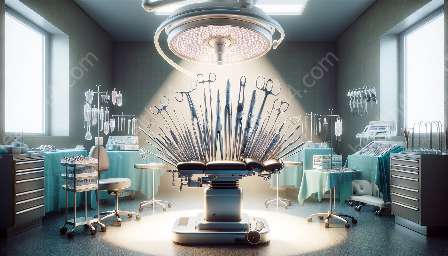Retractor rings play an essential role in surgical procedures, providing stability and support for various surgical instruments. They are compatible with a wide range of surgical instruments and medical devices & equipment, facilitating precision and efficiency in surgical interventions.
Understanding Retractor Rings
Retractor rings are circular devices designed to hold and support surgical instruments in a fixed position during medical procedures. They are commonly used in surgical fields such as orthopedics, neurosurgery, and general surgery. The primary purpose of retractor rings is to create a clear and unobstructed view of the surgical site, allowing surgeons to perform intricate procedures with accuracy and precision.
Compatibility with Surgical Instruments
Retractor rings are compatible with a wide range of surgical instruments, including scalpels, forceps, scissors, and retractors. These instruments are securely attached to the retractor rings, enabling surgeons to adjust and position them according to the specific requirements of the surgical procedure. The compatibility of retractor rings with surgical instruments is crucial in maintaining a steady and controlled environment during surgeries, ultimately leading to successful outcomes.
Integration with Medical Devices & Equipment
In addition to surgical instruments, retractor rings are also compatible with various medical devices and equipment. They can be seamlessly integrated with advanced imaging systems, such as endoscopes and laparoscopes, allowing surgeons to visualize internal structures with precision. Furthermore, retractor rings can be used in conjunction with robotic surgical systems, enhancing the overall functionality and effectiveness of minimally invasive procedures.
Benefits of Retractor Rings
The utilization of retractor rings offers several benefits in surgical settings. These include:
- Optimized Surgical Access: Retractor rings create a clear and unobstructed view of the surgical site, enabling surgeons to access and treat the targeted area effectively.
- Enhanced Precision: By securely holding surgical instruments in place, retractor rings facilitate precise movements and maneuvers during procedures, minimizing the risk of errors.
- Stability and Support: Surgical instruments and medical devices attached to retractor rings remain steady, allowing surgeons to focus on intricate surgical tasks without concerns about instrument slippage or movement.
- Compatibility with Advanced Technologies: Retractor rings can be seamlessly integrated with cutting-edge medical devices and equipment, enhancing the overall capabilities of surgical interventions.
- Improved Surgical Outcomes: The use of retractor rings contributes to improved surgical outcomes by promoting efficiency, accuracy, and patient safety.
Conclusion
Retractor rings are invaluable tools in the realm of surgical procedures, offering stability, support, and compatibility with a diverse range of surgical instruments and medical devices & equipment. Their role in achieving precision and efficiency in surgical interventions cannot be overstated, making them a vital component in modern surgical workflows.


